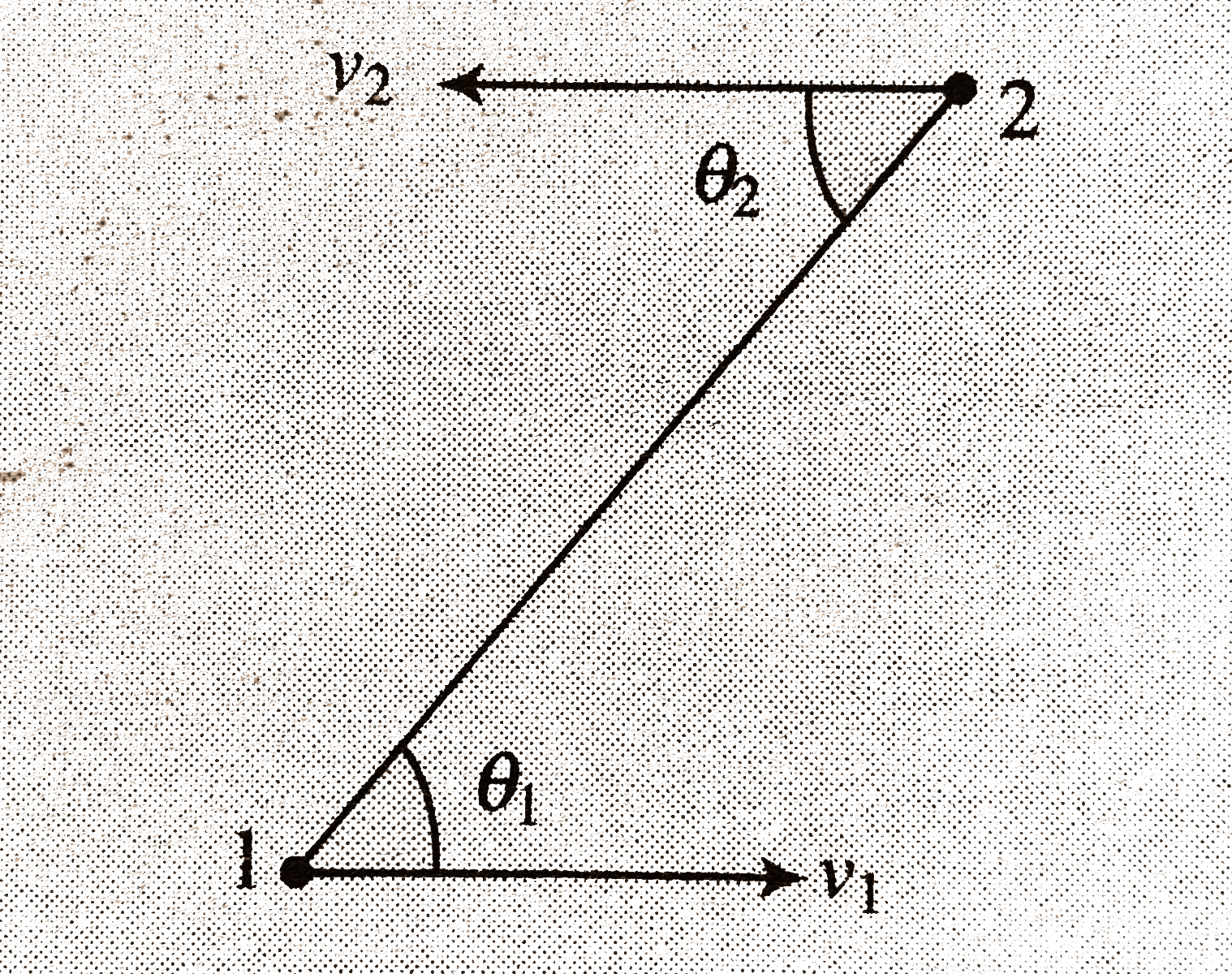If two bodies are in motion with velocity →v1 and →v2:
|vrel|=√v21+v22
|→–––(rel)|=v1±v2∣
vre=0
vrel>c (speed of light)
The correct Answer is:A, B, C
→vrel=→v1−→v2
|→v|=√v21+v21+2v−(1)v2cos(π−θ)
Topper's Solved these Questions
- BOOK - GRB PUBLICATIONCHAPTER - MOTION IN A STRAIGHT LINEEXERCISE - Assertion Reason12videos
MOTION IN A STRAIGHT LINE
- BOOK - GRB PUBLICATIONCHAPTER - MOTION IN A STRAIGHT LINEEXERCISE - Matrix -match4videos
MOTION IN A STRAIGHT LINE
- BOOK - GRB PUBLICATIONCHAPTER - MOTION IN A STRAIGHT LINEEXERCISE - Objective question168videos
MOTION IN A STRAIGHT LINE
- BOOK - GRB PUBLICATIONCHAPTER - FRICTION AND CIRCULAR MOTION EXERCISE - Comprehension type11videos
FRICTION AND CIRCULAR MOTION
- BOOK - GRB PUBLICATIONCHAPTER - MOTION IN TWO AND THREE DIMENSIONSEXERCISE - All Questions210videos
MOTION IN TWO AND THREE DIMENSIONS
Similar Questions
A moving particle of mass m collides elastically with a stationary particle of mass 2m. After collision the two particles move with velocity →v1 and →v2 respectively. Prove that →v2 is perpendicular to (2→v1+→v2)
View SolutionTwo particles 1and2 move with velocities →v1 and →v2 making the angles θ1andθ2 with the line joining them, respectively. Find angular velocity of relative→1.
 .View Solution
.View Solution
Knowledge Check
- Question 1 - Select One
Two particles of masses m1 and m2 in projectile motion have velocities →v1 and →v2 , respectively , at time t=0. They collide at time t0. Their velocities become →v'1 and →v'2 at time 2t0 while still moving in air. The value of ∣∣∣(m1→v'1+m2→v'2)−(m1→v1+m2→v2)∣∣∣
AzeroB(m1+m2)gt0C2(m1+m2)gt0D12(m1+m2)gt0 - Question 2 - Select One
Two point masses 1 and 2 move with uniform velocities →v1 and →v2, respectively. Their initial position vectors are →r1 and →r2, respectively. Which of the following should be satisfied for the collision of the point masses?
A→r1−→r2|→r2−→r1|=→v2−→v1|→v2−→v1|B→r2−→r1|→r2−→r1|=→v2−→v1|→v2−→v1|C→r2−→r1|→r2+→r1|=→v2−→v1|→v2+→v1|D→r2−→r1|→r2+→r1|=→v2−→v1|→v2+→v1| - Question 3 - Select One
Two particle A and B, move with constant velocities →v1and→v2. At the initial moment their position vectors are →r1 and →r2 respectively . The condition for particles A and B for their collision is
A→r1×→v1=→r2×→v2B→r1−→r2=→v1−→v2C→r1−→r2∣∣→r1−→r2∣∣=→v2−→v1∣∣→v2−→v1∣∣D→r1.→v1=→r2.→v2
What is the direction of the force acting on a charged particle q, moving with a velocity →v a uniform magnetic field →B ?
View SolutionA portion is fired from origin with velocity →v=v0ˆj+v0ˆk in a uniform magnetic field →B=B0ˆj. In the subsequent motion of the proton
View SolutionTwo particles A and B, move with constant velocities →v1 and →v2. At the initial moment their position vectors are →r1 and →r2 respectively. The condition for particle A and B for their collision is
View SolutionIn a one-dimensional collision between two particles, their relative velocity is →v1 before the collision and →v2 after the collision.
View SolutionTwo particles moving initially in the same direction undergo a one- dimensional , elastic collision . Their relative velocities before and after the collision are →v1 and →v2. Which of the following is not correct?
View Solution

